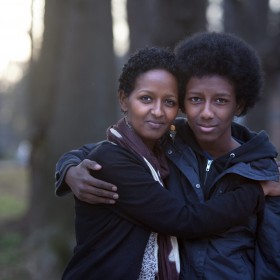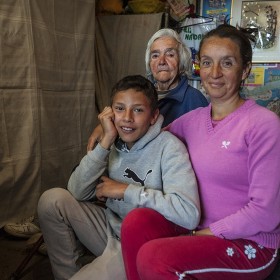Alixandra Fazzina, Photojournalist

Photo by Alixandra Fazzina/NOOR 2014.
Pakistan’s Forgotten Refugees
As Pakistan launches an offensive this week against insurgents in North Waziristan, the military operation is just the latest in what has been more than 8 years of incessant war. As frontlines against the Taliban on the Afghan border shift, millions have been left displaced. Forgotten and surviving on the margins of society without aid, many have been left permanently scarred, unable to ever return to their homes.
In 2008 I documented fighting in the northerly tribal agency of Bajaur in what was the Pakistan army’s first battle against the Taliban. Entire towns and villages had been razed to the ground; the valleys were empty. Half a million people had run for their lives. For the past 5 years I have worked following those who fled. Only half of Bajaur’s population has ever returned.
In March this year, I spent time with some families of IDPs from Bajaur holed-up in mud huts at a squatter camp on the edge of Islamabad. Chatting to a group of women, the pain they have suffered since leaving their homes was vivid. Among them, an elderly lady with bright red hair was cradling her twenty-five day old grandson. Shielding the baby out of the cold winds in what was a dismal sanctuary, Bacha Hilal became lost in her memories of war.
“The first time the Taliban came our life became limited only to our house. They didn’t let us go to our fields or collect wood from the mountains and we weren’t even allowed to go to the river for water. They demanded that no child should go to school and anyone working for the government should abandon their jobs. They even banned dogs, cockerels and donkeys and instructed the men to start cultivating poppy. After Eid in 2008 the army came. They started shelling and their tanks began to flatten the houses… There was a big ditch in the land by our home and there were times we would spend two or three nights there taking shelter with the children. A lot of people were killed; the Taliban were slaughtering on the ground and the army was bombing from above. One day a mortar landed very close to us; the shrapnel hit my husband in the eye. At 4am the next morning we left. We were all so scared as there were landmines all around. Nobody stayed behind; our whole village fled.”
Bacha Hilal’s worst fear is that her family’s tiny shelter in this sprawling slum will become her grave. “In Islamabad we live in poverty. We can’t even afford the smallest of things and don’t know if we will eat one day or the next. We’ve borrowed all we can against our lands but no longer have any money. We are still IDPs. Because of the fighting, we are in this condition”.
With no place go and their numbers now swelling, the millions urban refugees from Pakistan’s tribal belt are the forgotten victims of an unseen war.
by Alixandra Fazzina | NOOR Photographer and Author
http://noorimages.com/feature/pakistans-at-war-2008-2014/
Alixandra is from a fine art background and began her career as a war artist in Bosnia. She has worked as a photojournalist throughout Eastern Europe, Africa, the middle east and Asia focusing on under-reported conflicts and the often forgotten humanitarian consequences of war. Her reportages have been widely published in the British and international press including The Sunday Times, The Guardian and Observer, The Telegraph and The Independent as well as TIME, Newsweek, The New York Times and Stern.
In 2010, Alixandra was recognized as the winner of the UNHCR Nansen Refugee Award for her striking coverage of the devastating human consequences of war and because of her fearless and tireless dedication to humanitarian photography throughout her career.









